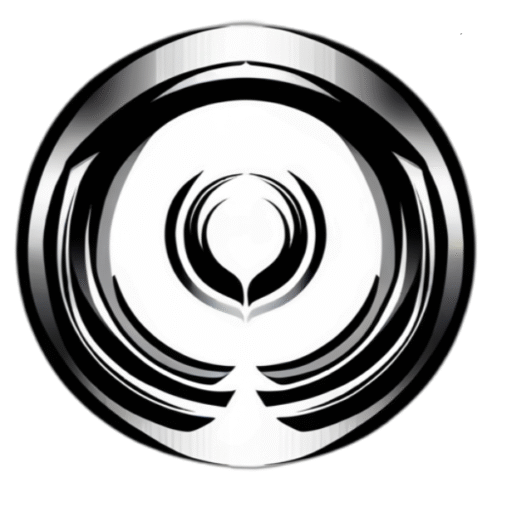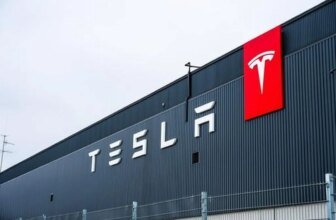Opportunities for learning design and technology skills and values in the Maltese curriculum
The philosophy of technology
The concept of a distinctive philosophy of technology, one that has moved away from the paradigm that “technology is simply applied science”, is currently a well-established academic domain (Dakers, 2018; de Vries, 2016a). Both these authors present important summarised contributions on the evolution of the philosophy of technology and both stress that technology, and technology education is a complex area to study and has interrelationships between economic, social, political, cultural, religious and philosophical discourses. Both authors argue that there is much more to technology education than the mastery of technological know-how and the techniques associated with the fabrication of artefacts. Clearly, several contributors emphasize that a contemporary definition of technology, and hence technology education, needs to transcend the mere provision of vocationally oriented skills. A relevant account of how the philosophy of technology can be used by educators, technologists and policy makers can be found in (de Vries, 2016b).
De Vries (2016a) states that the main themes in the philosophy of technology include (a) the nature of technical artefacts, (b) the nature of technological knowledge, (c) the nature of models in technology and engineering and (d) norms and values in technology. These stem from the seminal contribution of (Mitcham, 1994) which has been further developed by (Meijers, 2009). The work in this paper focuses on the nature of technological knowledge and draws upon relevant literature by scholars such as (Bayazit, 1993; de Vries & Tamir, 1997; McCormick, 1997; Mitcham, 1994; Nordlöf et al., 2021; Pleasants & Olson, 2019; Ryle, 1949; Simon, 1996; Vincenti, 1990). A deep understanding of such philosophical concepts is considered indispensable for fostering responsible innovation and making strategic choices for the future of the discipline of technology.
In the 1990’s the philosophy of technology experienced an “empirical turn” where many scholars offered their contributions through their own experiences or through observations of professional technologists at work. What constitutes the nature of technological knowledge has been an intense debate. Some authors who catalogued types of knowledge relating to technological knowledge may be found in Table 1. The columns of the table map onto each other to show how different authors may have used a slightly different label to describe the same knowledge type. Thus, what(Ryle, 1949) or(Sheppard et al., 2009a) referred to as “knowing how”, (Herschbach, 1995), (Schraw & Moshman, 1995), (Bayazit, 1993),(McCormick, 1997) and (Gradwell, 1999), referred to respectively as “prescriptive”, “procedural” and “skills”. Similarly, what(Ryle, 1949) or(Sheppard et al., 2009a) referred to as “knowing that”, is labelled by the other authors as “descriptive”, “declarative”, “conceptual”, and “knowledge”.
Most authors seem to agree that, “procedural”, and “conceptual” knowledge are fundamental components of technological knowledge. “Procedural” knowledge is, knowing how to do things. It is geared toward action and results from the successive efforts to achieve greater effectiveness such as improved procedures or operations. It is modified or increased as greater experience is gained. It is less tied to scientific law and not easily codified. Therefore, it is less amenable to the formulation of generalized training that goes beyond a particular activity.
“Conceptual” knowledge is, knowing about things and relationships amongst them. It represents knowledge that is a statement of fact, often, the applications of explicit scientific knowledge. This knowledge can fit into a consistent and generalizable structure and therefore approaches the formal knowledge of a discipline.McCormick (1997) interprets technological “conceptual” knowledge as feeding from science, mathematics and possibly other subjects.Simon (1996) indeed concurs by emphasizing the interdisciplinary nature of technological knowledge, drawing parallels between engineering, computer science, and psychology.
According to McCormick (1997), the relationship between conceptual and procedural technological knowledge gives rise to what he terms “device” knowledge. Such knowledge is also acknowledged by Borgmann (1987); Ropohl (1997a). This type of knowledge reflects the context of a specific device, its operation, and also the abstract scientific knowledge which lies behind its working principles. McCormick proposes that technological conceptual knowledge may act as an intermediary knowledge between the abstract knowledge of science and mathematics, and the specific knowledge of the device.
The blend of knowledge types composing technological knowledge is much richer than just “conceptual” and “procedural” knowledge. Authors such as Ryle (1949); Sheppard et al. (2009a) andSchraw & Moshman (1995) include also the conditional type of knowledge, the know “why” and know “when” type of knowledge.Herschbach (1995) and(Polanyi, 1962, 1967) also include “tacit” knowledge, which is implicit, often protected, and largely the outcome of individual judgment, skill, practice, and experience with the tricks of the trade (Gradwell, 1999).Norman (1998) recommends that knowledge of values is an essential addition to that of concepts and skills. de Vries and Tamir (1997),de Vries (2005) andDusek (2006) emphasize how technological knowledge involves judgments, say about the assessment of evidence, or decision about a path of action, without having or following rules. It is therefore not enough to just describe the functions of artefacts or manipulate matter and information concepts (Savage, 2002). These authors also point out that there is an assumed dominance of rationality in technological knowledge and judgments. Nevertheless, non-rational factors influence technological decision-making processes as well, just as in the legal or medical professions. Ethics and cultural-historical aspects for example, play key roles in technological decision-making processes (Fleer, 2020; Stables & Keirl, 2015). The social, political and cultural structures constituting a critical or continental philosophy of technology was discussed in depth by philosophers such asHeidegger (1993) and Feenberg (1999). The degree of rationality may not follow the same formula, however, as for the disciplines of mathematics or science which are considered highly rigorous in their requirements. Rather, one may adopt what (Dusek, 2006) calls “instrumental” rationality, which involves a search for the most efficient means to reach a desired end.McCormick (2004) continues to supplement the list by claiming that qualitative knowledge is also an essential component of technological knowledge.
Therefore, although engineering theory is considered as a primary characteristic of technological knowledge(Layton, 1991; Vincenti, 1990) the nature of technological knowledge is diverse and widespread. Technologists seem to create and use technological laws which are closer to the systems dealt with, than the concepts of science and mathematics. These laws are usually transformations of natural laws derived from scientific theory or empirical generalizations that can be used successfully in a real technological process. These technological laws may be stated as verbal instructions, diagrams, or charts and at times do not even necessitate theoretical understanding but serve as recipes to specify what to do if certain results are to be attained under particular circumstances (Ropohl, 1997b).
The defining characteristic of technological knowledge is therefore its relationship to activity and to knowing, being able to act practically, and being able to employ values, judgments, and qualitative and tacit knowledge to size up a situation and accomplish a task. Skilled learners of technology possess all the mentioned types of knowledge components and are likely to sequence strategies effectively and use qualitatively different ways to solve problems (Herschbach, 1995; Norman, 1998; Savage, 2002).
Defining design and technology for education
Simon (1996) makes an argument for the credibility and respectability of design as a science and underscores the importance of design science as a core discipline, essential for fostering creativity and problem-solving across various domains. Simon’s insights underscore the holistic nature of technological knowledge, a type of knowledge that transcends disciplinary boundaries and integrates diverse perspectives. (Cross, 2001, 2007) concurs by stating that design needs to have its own disciplinary domain.
Design is composed of multiple activities such as empathy and user focus, problem framing, defining and analysis, synthesis and visualization and evaluation, experimentation and iteration as proposed by multiple design process models (Bobbe et al., 2016; Gericke & Blessing, 2012; Grönman & Lindfors, 2021; Yazdani, 1999). Design practice such as the Business of Design Week (Hong Kong Design Centre, 2023) is characterized by the “interconnection or interaction of analytical investigation, experimental drafting, practical doing, methodological testing, critical reflection, and theoretic-scientific input. For each step in this iterative process, there are specific, consolidating tools and instruments.” (Design Foundation et al., 2021, p. 122).
Professional design practice involves advanced multidisciplinary knowledge and assumes interdisciplinary collaboration (Friedman, 2012), both of which impact the modus operandi of design education at the core. Since it is a practical activity engaged by professionals, design should be grounded in an appropriate epistemology of practice (Schön, 2017; Waks, 2001). For design to develop its full potential as a major contributor to society, design education needs to be a rigorous, interdisciplinary, and socially responsible activity (Frascara, 2017).
Recent publications (Norman, 2011; Voûte et al., 2020) have underlined how the landscape of education and design has changed over the past decades. Even as early as 1997, Friedman suggested that the vocational approach based on mechanical trade education aimed at teaching people to operate tools within frameworks established by tradition or the decision of employers through repetitive exercises and prescribed knowledge should not be advocated as a contemporary definition of design science and design education (Friedman, 1997, 2002, 2003, 2012). Weil and Mayfield (2020) concur by stating that competencies offered to students must move away from those that are purely technical and quickly become stale and outdated to those that are more evergreen. Johnson (1997) highlighted the necessity for deeper intellectual skills beyond memorization and motor skills in technology education and advocated for social constructivist learning theories to impart these skills effectively. Cultivating generic skills is deemed advantageous due to the rapid evolution of technology (de Vries & Tamir, 1997) and, while initial instruction should be context-specific, students must develop these generic skills to a more abstract level for enduring adaptability and relevance (McLaren, 2012).
Friedman argues that design education should be based on a critical inquiry that hinges on intellectual, scientific, analytical, and rhetorical tools and that successful design programs have moved beyond craft skill and vocational knowledge into professional knowledge. Indeed, designers are being entrusted with employing design methodologies to solve increasingly complex and meaningful challenges (Meyer & Norman, 2020) and well-established design schools claim to target the “hardest to hire” skills (Muratovski, 2020).
The ITEEA Standards of Technology and Engineering Education (ITEEA, 2020) constitute the embodiment of such suggestions because they hold design in technology and engineering within the inner core of their STEL (Standards for Technological and Engineering Literacy) standards, practices, and contexts of a multitude of diverse technologies. Within the ITEEA standards, we can see the encompassing of design education within technological education including engineering education. This is suggested even for the lower levels of primary and secondary education. The inner core standards and practices possess many features in common to how engineers think (Lucas & Hanson, 2016).
The definition of design through recent process models(Dresch et al., 2015; Johannesson & Perjons, 2014; Koh et al., 2015; Laurillard, 2012; Scott & Lock, 2021) indicates the proliferation of Simon’s recommendation that the design discipline’s natural interdisciplinary and integrative character(Ilhan, 2017) makes it ideal to sit in a central place within platforms of diverse knowledge, especially technological knowledge, and education (Gericke & Blessing, 2012; Grönman & Lindfors, 2021).
Even at higher levels of education, the focus of curricular content of courses that merge design education with technology education has shifted to reflect changes in the design profession (Frascara, 2017, 2020; Design Foundation et al., 2021; Meyer & Norman, 2020; Singh et al., 2018; Voûte et al., 2020). Here, knowledge and skills fan into a diverse spectrum from arts to engineering and a domain such as for example, industrial design, is considered to be very wide in tertiary education (Goatman & Moody, 2014). Brosens et al. (2023) identified the key topics for future design curricula at tertiary education which include (a) design methodology, (b) sustainability and, (c) human-centered design. According to Brosens, the necessary skills needed would be reflective thinking, collaboration, interdisciplinary skills, communication, entrepreneurial skills, systems thinking, innovative thinking, multicultural understanding, and project management. Teaching and learning activities should move towards being more learner-centered and co-teaching involving multiple disciplines. For practical skills development, emphasis should be put on studio-based learning for peer-to-peer interaction and problem-based learning. Critique sessions should transition from teacher-centered to coaching or mentorship styles and increased focus on science-based learning and activities such as sketching and prototyping should be fostered to enhance exploratory skills.
A robust framework for understanding design and technology should therefore be based on the understanding of the philosophy of technology and the epistemological nature of design and technological knowledge together with recent ontology-based paradigm shifts. To encompass diverse facets of such knowledge as artifacts, knowledge, processes, and volition (Doyle et al., 2018; Meijers, 2009; Mitcham, 1994; Nordlöf et al., 2021) such an understanding of technological knowledge is essential because the design of a curriculum significantly influences students’ perceptions of technology (de Vries, 2016b). Evaluating a technology education curriculum involves assessing its alignment with these conceptualizations (de Vries, 2016b). When design is coupled with technology the shift of technology from craft in pre-industrial times, to machine technology in the industrial era to the intellectual technologies of the post-industrial era needs to be considered for planning a curriculum (Friedman, 2012). Several scholars have made suggestions such as the importance of introducing emerging technologies like robotic systems, 3D printing, and microprocessor-based tools (Barlex, 2015; Mioduser et al., 2015), but these always hinge on employing technological concepts (de Vries, 2016b; Rossouw et al., 2011a), engineering habits of mind together with the STEM philosophy (Bybee, 2010; Hanson & Lucas, 2020; Li et al., 2019; Lucas et al., 2014a, b) rather than detailing subject content in itself. The notion of volition is important given emerging technologies since technology is never neutral but is embedded human intentions, values, and societal contexts. Technology should not just be seen as a set of tools but as a human activity that involves ethical responsibility and deliberation. When viewed through Mitcham’s lens (Mitcham, 1985, 1994), volition in technological knowledge is not just about knowing how to make or use technology but also about the moral and philosophical choices involved in technological action. This means that technology is not just an objective force but is shaped by human decisions, cultural contexts, and ethical considerations.
Trends in design and technology education – the international context
Xu et al. (2020) have identified hotspots and trends revealed by a thorough analysis of the International Journal of Technology and Design Education (IJTDE, n.d.) for the years 2000 to 2018. According to Xu’s analysis, most mainstream articles in the technology and design education field are published in the IJTDE. Thus, it is an important platform for the exchange of research results in the field of technology education and has an important influence on the development of this field. Xu’s research is a development from (Williams, 2013, 2016, 2018) work on research trends in technology education. Such work is important because it illustrates the direction of argumentation that researchers are taking in the field. Such argumentation should be used to inform practices and decisions in the said field.
Xu’s research has identified top keywords in the IJTDE and these are the following: technology education, education, design, creativity, science, technology, design education, knowledge, student, curriculum, technological literacy, design process, engineering design, engineering education, and problem-solving. Their research has also identified cluster labels selected from noun phrases and these are presented in Table 4 in Appendix 1. The words in Table 4 continue to reinforce what the seminal works in the philosophy of technology and the nature of technological knowledge have always stated, namely that higher-order skills are essential to the pedagogical ecology of technology education programs (McLaren, 2012). Xu’s final conclusions were that the main research themes of IJTDE refer to problem-solving, technological literacy, project-based learning, primary education, cognition, community of practice, engineering design and education, STEM education, computer innovation performance, collaborative learning, and curriculum development.
Pedagogical practices – teaching and learning technology
Much has been written on pedagogies and what is most effective to teach and learn knowledge in design and technology education (Petrina, 2006; Williams, 2020). Constructivism, as proposed by Piaget in (Bates, 2019) holds that learners build knowledge by comparing real-world experiences with existing knowledge. When constructivism is applied to learning Design and Technology, it means that the learning process needs to encourage critical engagement with technology’s societal impacts while also promoting analytical problem-solving (de Vries, 2005; McCormick, 1997). Constructionism, an extension of constructivism, focuses on learners actively creating external artifacts, thus fostering tangible knowledge construction and peer collaboration (Han & Bhattacharya, 2001). This approach supports project-based learning (PBL) and Learning by Design (LBD), both of which emphasize collaborative problem-solving and critical reflection in authentic contexts (Han & Bhattacharya, 2001; van Breukelen et al., 2017).
In such educational settings, teachers act as facilitators, guiding students in strategic decision-making and providing explicit instruction only when necessary, allowing students to navigate challenges and construct knowledge independently (Bates, 2019; Kolodner, 2002; McCormick, 1997; Murphy & Hennessy, 2001). This integration of constructivist and constructionist approaches offers a student-centered framework that nurtures critical thinking, problem-solving, and creativity, thus preparing students to effectively engage with the complexities of the technological world. It fosters a deeper and more meaningful understanding of technology and its broader implications and incorporates experiential learning and the adoption of a flexible curriculum as originally proposed by Dewey as cited in (Bates, 2019). The design and technology subject in primary and secondary education reflects the contemporary efforts to evolve new pedagogies appropriate for the age of rapid technological advancement (Kimbell & Perry, 2001). Unlike scientific thinking which tends to regard uncertainty and ambiguity as threats to knowledge development (Duschl, 1990), design thinking thrives on ambiguity and uncertainty and acts to broaden the educational experience by encouraging innovative and reflexive thinking, self-awareness, and social consciousness which are many of the desirable traits identified as twenty-first-century competencies (Voogt & Roblin, 2012). However, if teachers are to foster a design-oriented epistemic outlook, they first have to be well-versed in the ideas of design and engage in the practice of design themselves (Koh et al., 2015).
Industrial trends in design and technology
Educational research trends seem to align with the transition of industrial trends especially the latest transition towards Industry 5.0. Xu et al. (2021) explain the characteristics of the industrial revolutions as in Table 2. Gürdür Broo et al. (2022) conducted a trend-spotting activity to identify possible influencing factors that might have a great impact on engineering education and research, and states that a fundamental change is required to facilitate the development of technical skills, and cognitive and non-cognitive (“soft”) skills. Gürdür Broo et al. (2022) highlights that the future of engineering education might lie in the “4Cs of twenty-first-century learning which are: Critical thinking, Creativity, Collaboration and Communication”. The understanding is that these Cs occur not only as human-to-human interactions, but more as human-machine cooperation and collaboration, necessitating knowledge that is transdisciplinary rather than bounded.
Industry 4.0 is considered a technology-driven revolution to achieve higher efficiency and productivity and a high-tech strategy to enhance competitiveness in a global market. Xu et al. (2021) states that consulting groups have identified these technologies as key enabling technologies of Industry 4.0: Big data and analytics, autonomous robots, simulation, horizontal and vertical system integration, Industrial Internet of Things, Cybersecurity, Cloud, Additive Manufacturing, and Augmented Reality. Industry 4.0 addresses challenges such as resource and energy efficiency, urban production, societal needs, and demographic change, but according to Xu Industry 4.0 may not be considered a human-centric initiative.
Industry 5.0 recognizes the power of industry to achieve societal goals beyond jobs and growth, to become a resilient provider of prosperity by making production respect the boundaries of our planet and placing the well-being of the industry worker at the centre of the production process. Industry 5.0 complements the existing Industry 4.0 paradigm by having research and innovation drive the transition to a sustainable, human-centric, and resilient industry and recognize the need to better integrate social and environmental priorities into technological innovation by shifting the focus from individual technologies to a systemic approach (Meyer & Norman, 2020). Industry 5.0 is therefore not technology-driven but value-driven. This aligns perfectly well with the predictions of Kroes and Meijers as cited by de Vries (2016a), who, in the year 2016 stated that the philosophy of technology’s next turn will be an axiological turn, which is a sub-domain in philosophy that is concerned with values. Such re-orientation will necessarily have an impact on design and technology education since individuals will need to shift roles from being users to being responsible creators (Graube & Mammes, 2017).
Common features of new technologies
An amalgamation of information, communication, and artificial intelligence is taking place as well as cross-fertilization of a wide range of concepts. This is referred to as the digital transformation (Gürdür Broo et al., 2021, 2022). Emerging technologies, defined by their digital and automated nature, significantly diverge from traditional manual technologies (Shanks et al., 2014). Identifying shared characteristics among these technologies suggests that proficiency in one can facilitate the learning of others. As these technologies evolve, so too must the skills and values necessary to utilize them effectively (Kaur Majithia, 2017). Key to navigating this landscape are resilience, adaptability, and ongoing development for both professionals and students. Collaboration fosters readiness for the interdisciplinary teamwork common in modern work environments, while critical thinking and the ability to assess new ideas are crucial for discerning relevance and optimizing the application of emerging technologies (Sawyer, 2014).
In Design and Technology education, students should integrate new knowledge into existing mental frameworks and leverage the skill of knowledge interconnection to grasp underlying concepts (Sawyer, 2014). Employing skills of integration, interconnection, and pattern recognition enables students to extrapolate learned concepts to new technologies (Sawyer, 2014). Understanding the fundamental principles of technologies is more beneficial than mere familiarity with specific tools. For example, comprehending the logic of computer numerically controlled (CNC) programming languages is advantageous over mastering a particular language, as the logic is transferable across various automated machine tools. To promote deep learning, curricula should facilitate conceptual leaps and encourage self-directed learning, known as heutagogy (Nikolovska Ilieva et al., 2019). Essential skills to impart include knowing how to access information and determining its relevance.







